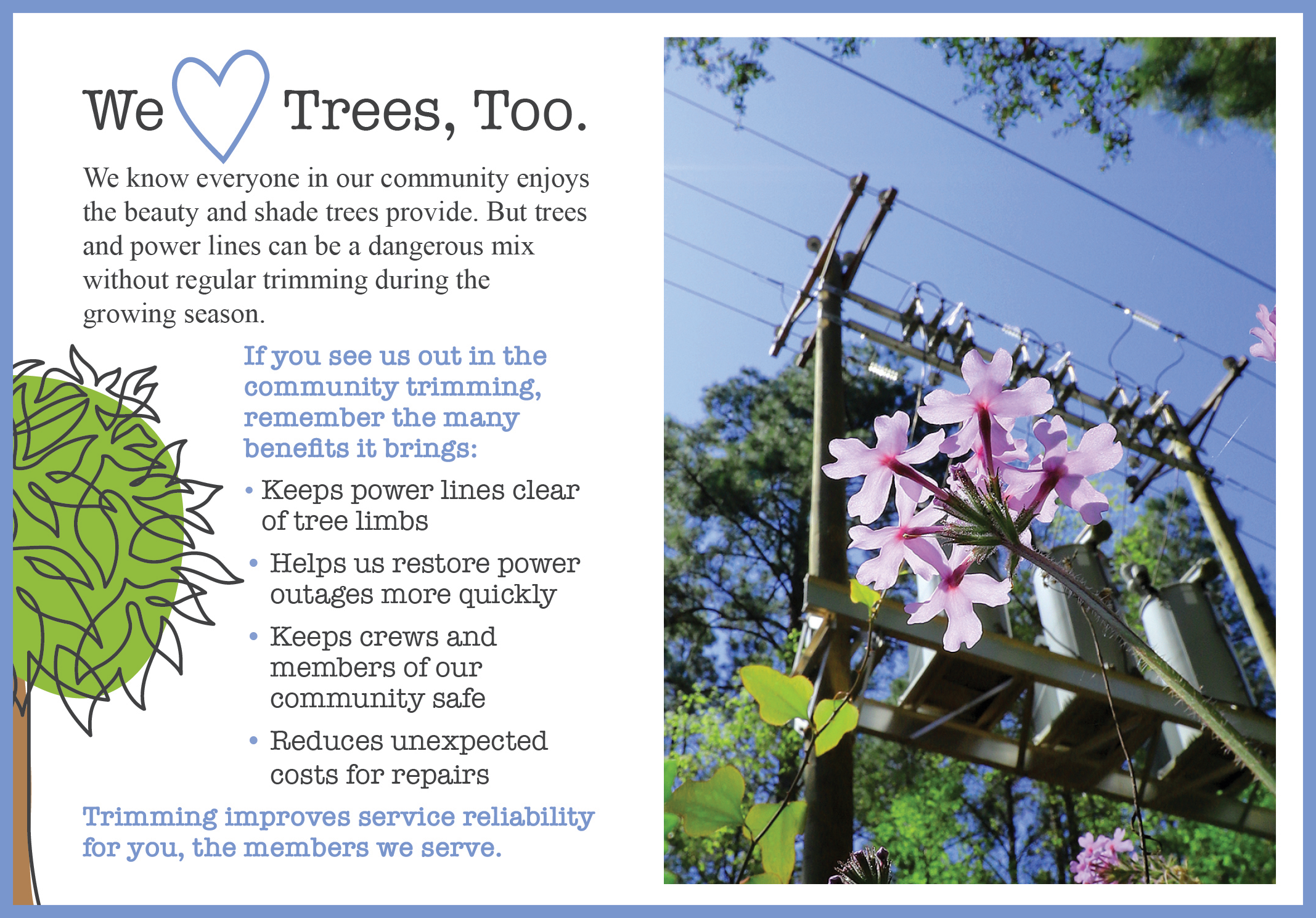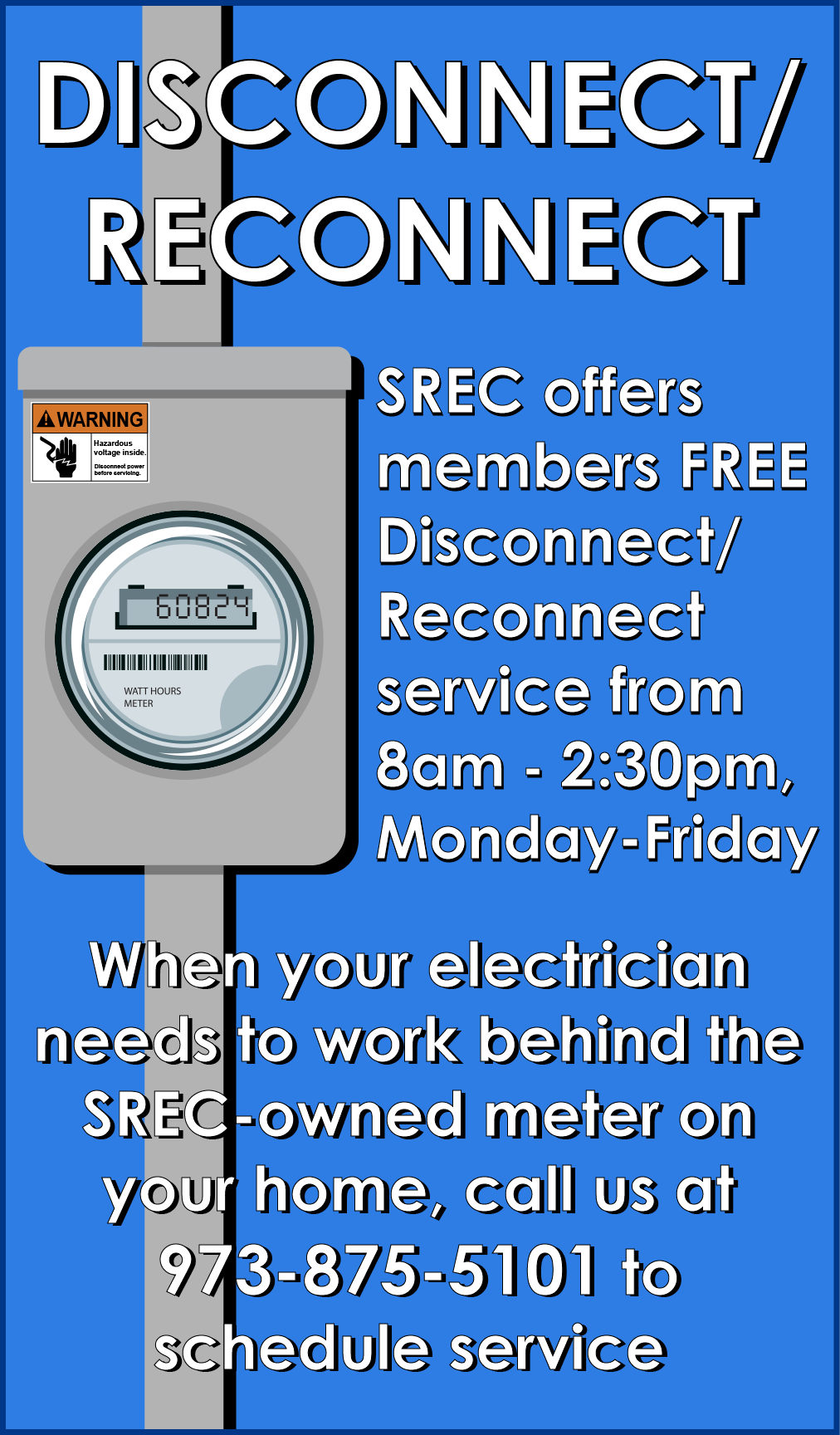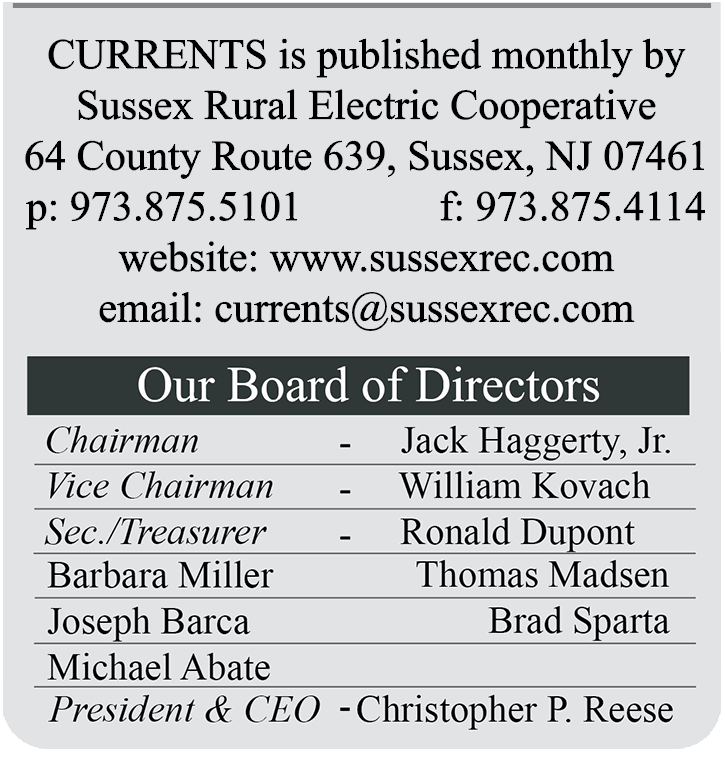To view the full print/pdf version of this issue of Currents, click here
For previous issues of Currents, visit our Currents Library
The Co-op's New Challenges
Part 2: Trees, Trees, Everywhere Trees
By: Chris Reese, President & CEO
Email: contacttheceo@sussexrec.com
In this three-part series, I am addressing the changes on many different fronts that have created new challenges for Sussex Rural Electric Cooperative, too many to address in one article. In September’s issue, I wrote about the new supply chain issues that are affecting the Co-op and the rest of the country, as well as rising costs in our power supply. This month, the topic is not a new issue, but an older one with new factors that are adding to the challenge.
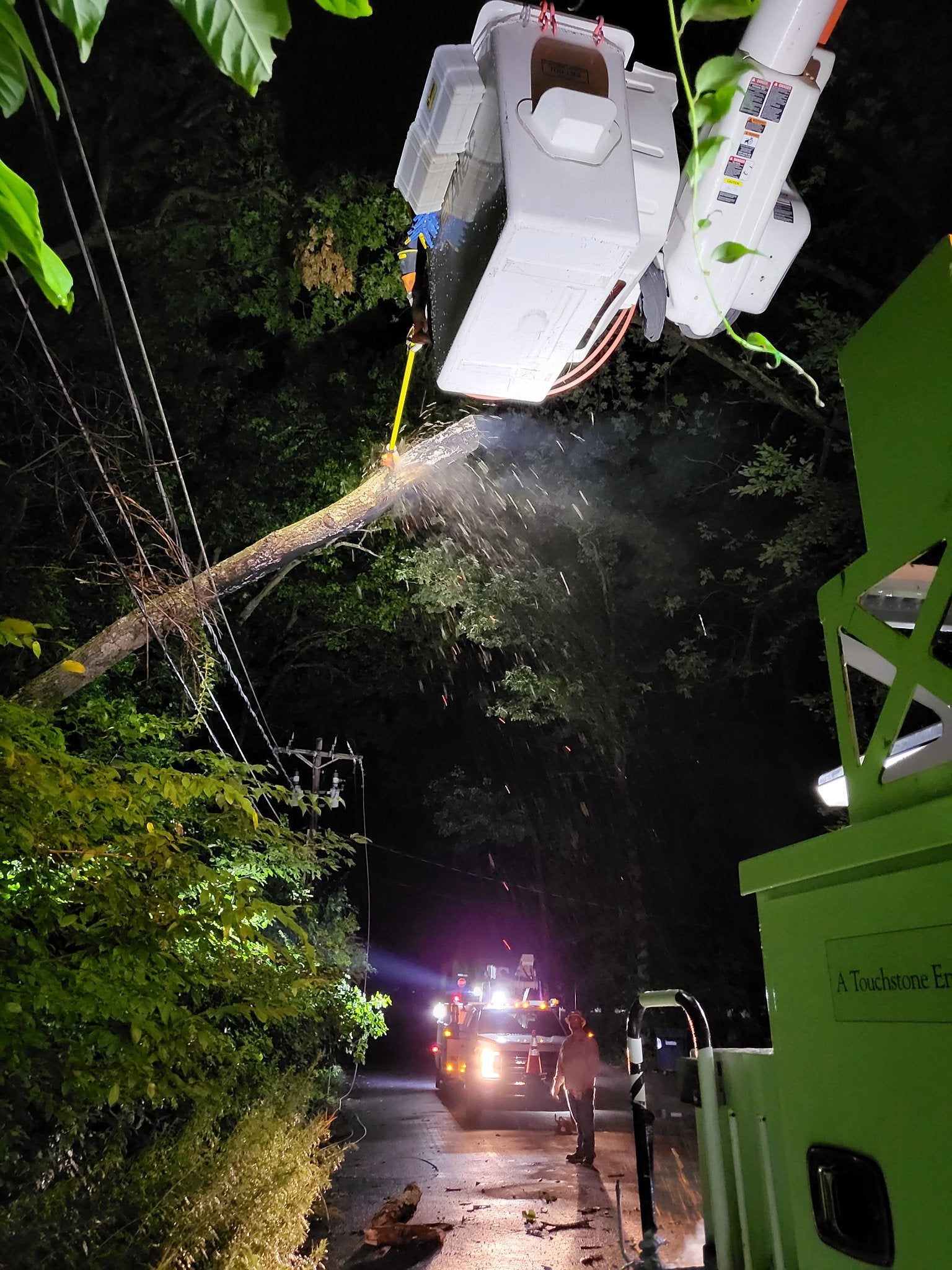 In a heavily wooded service territory like ours in Sussex and Orange Counties, trees have a major impact on power distribution. With so many of them interwoven with our communities and many of them showing their age, our trees are highly susceptible to extreme weather. Weather events frequently damage trees and cause them to come into contact with power lines. This can be due to strong winds, wet snow and ice, or even heavy rain due to wet ground conditions. Damage sustained by a tree from severe weather can also make them more likely to topple days or weeks later, even when there is no ongoing extreme weather event taking place.
In a heavily wooded service territory like ours in Sussex and Orange Counties, trees have a major impact on power distribution. With so many of them interwoven with our communities and many of them showing their age, our trees are highly susceptible to extreme weather. Weather events frequently damage trees and cause them to come into contact with power lines. This can be due to strong winds, wet snow and ice, or even heavy rain due to wet ground conditions. Damage sustained by a tree from severe weather can also make them more likely to topple days or weeks later, even when there is no ongoing extreme weather event taking place.
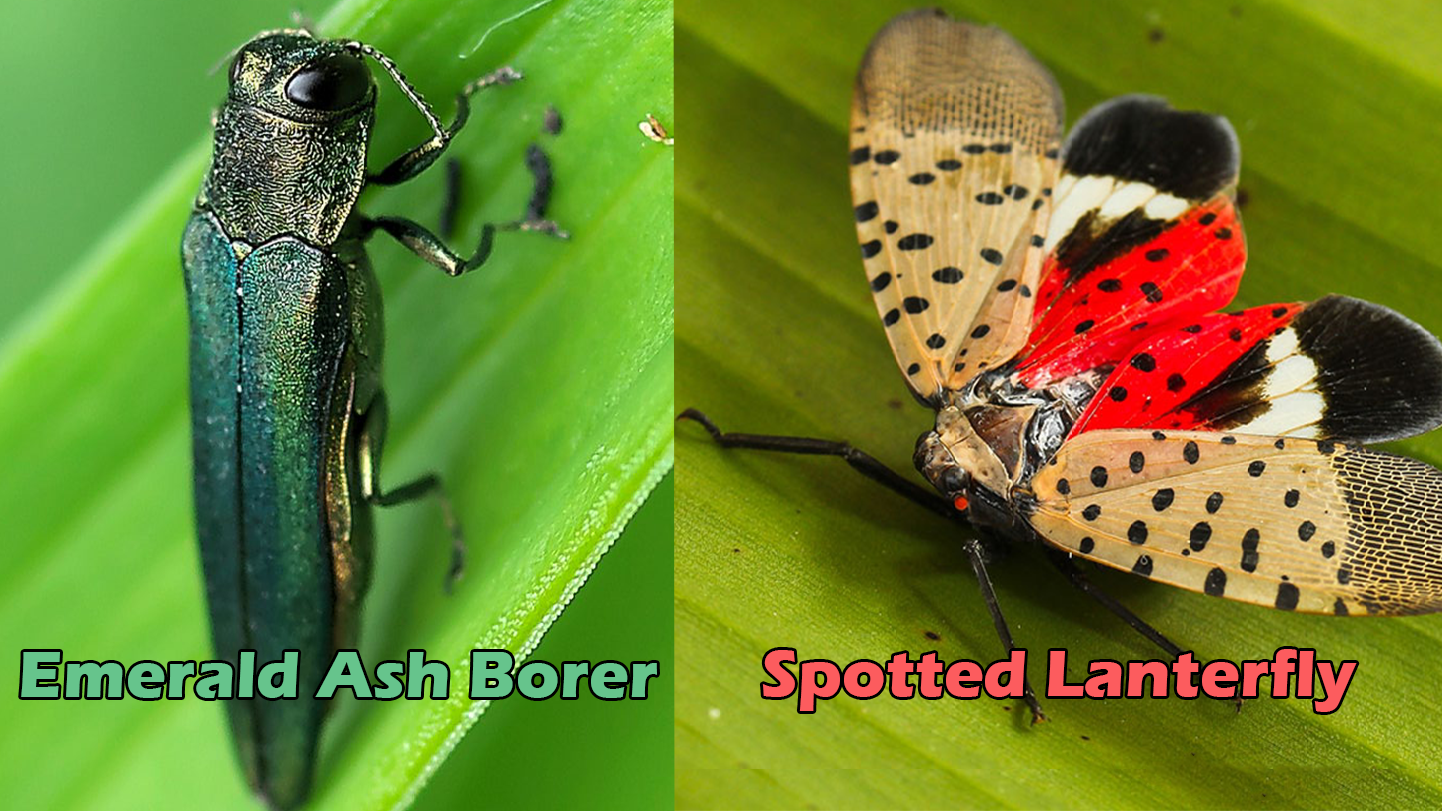 And now, the issues with trees are compounded by problems with invasive pests like the emerald ash borer and spotted lanternfly. These tree-killing bugs didn’t even exist in our area a decade ago. The ash borer was first discovered in New Jersey in 2014 and the laternfly in 2018. The ash borer has decimated ash trees throughout the United States and the fear is the laternfly may do the same to a variety of other tree species. For more information on the emerald ash borer and the spotted lanternfly, you can read our article from August's Currents.
And now, the issues with trees are compounded by problems with invasive pests like the emerald ash borer and spotted lanternfly. These tree-killing bugs didn’t even exist in our area a decade ago. The ash borer was first discovered in New Jersey in 2014 and the laternfly in 2018. The ash borer has decimated ash trees throughout the United States and the fear is the laternfly may do the same to a variety of other tree species. For more information on the emerald ash borer and the spotted lanternfly, you can read our article from August's Currents.
Trees are the number one cause of power outages on our system, and these new threats only increase the likelihood of a tree-caused outage. For this reason, we take tree trimming very seriously. We are constantly trimming every mile of our primary lines (the power lines that go down all of the roads we serve and through woods and fields to get to other roads) on a four-year cycle. We currently work with Asplundh Tree Experts to handle our extensive tree trimming needs. You may recognize their orange trucks as they work throughout our community.
Through our ongoing right-of-way maintenance program, we aim to keep our power line pathways as clear as possible. We cut branches and trees on both sides of our lines, as well as above and below. We occasionally receive some resistance from members about how much we trim, and we totally understand that the aesthetics of a tree in your yard could be compromised. It may seem like we’re cutting branches back too much, but we do so to account for four years’ worth of a tree’s growth. If we don’t cut a tree back, and it falls into the lines in the near future, there are no questions about looks anymore – that tree is now gone anyway. We try to work with members when possible, but must always consider the security of our power lines first and foremost. That one tree in your yard, if it falls and is too close to the line, can cause an outage that affects not just you but possibly hundreds of your neighbors.
Tree trimming is the Cooperative’s largest expense, aside from our cost to purchase our power. In 2021, we spent just under $1 million dollars on tree trimming. And this wasn’t just a one time occurrence. This is the amount we spend on tree trimming efforts year after year. While this may seem extremely high, it is perhaps, to some, not high enough. Doing all of this prevents potential outages which would overall be even more costly to repair if there are too many of them.
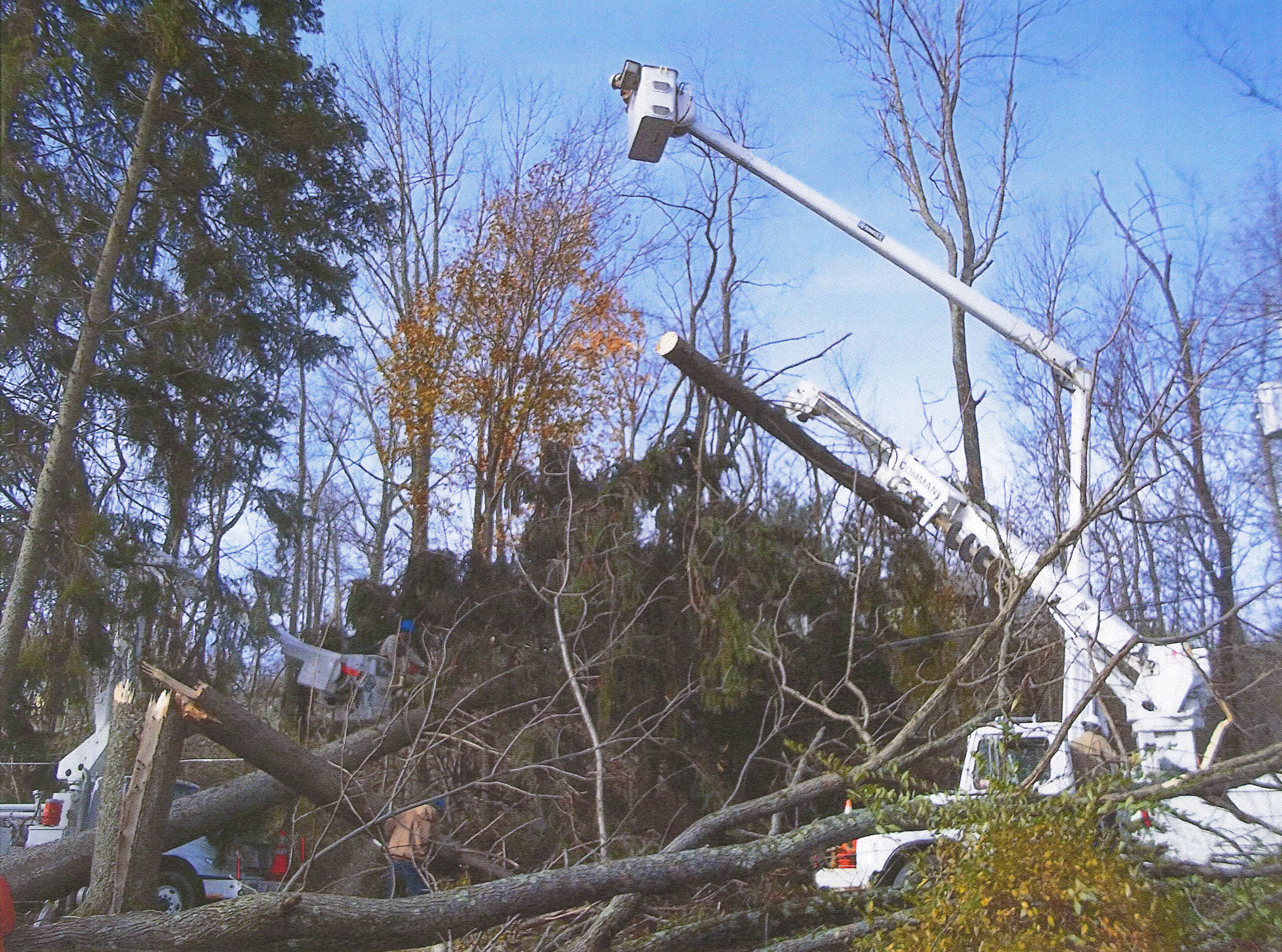 Does all of this expensive work eliminate every tree that can affect our lines? Unfortunately, it does not. Take a look around when you go out for a drive or walk, especially in some of our many lake communities. Trees tower over the lines everywhere. Some are more than twice the size of our 40’ poles. To take care of all these threats, we would have to create huge pathways that are not even remotely reasonable to think possible.
Does all of this expensive work eliminate every tree that can affect our lines? Unfortunately, it does not. Take a look around when you go out for a drive or walk, especially in some of our many lake communities. Trees tower over the lines everywhere. Some are more than twice the size of our 40’ poles. To take care of all these threats, we would have to create huge pathways that are not even remotely reasonable to think possible.
 Most of our trees are perfectly healthy. However, between our company arborist and our tree trimming contractors, we work to identify “hazard” trees that may be outside of the trimmed right-of-way. Sometimes they’re even on the other side of the street. These are dead or dying trees that seem likely to fall into our lines. A lot of these are the ash trees killed or damaged by the ash borer. These are trees that we do remove, often at a significant cost because they are usually very large. This hazard tree removal program is something we began about five years ago. Due to the increased amount of dying trees, we have had to increase how much we spend on this every year. We cannot feasibly remove every tree that might become an issue, so we always prioritize the most immediate threats.
Most of our trees are perfectly healthy. However, between our company arborist and our tree trimming contractors, we work to identify “hazard” trees that may be outside of the trimmed right-of-way. Sometimes they’re even on the other side of the street. These are dead or dying trees that seem likely to fall into our lines. A lot of these are the ash trees killed or damaged by the ash borer. These are trees that we do remove, often at a significant cost because they are usually very large. This hazard tree removal program is something we began about five years ago. Due to the increased amount of dying trees, we have had to increase how much we spend on this every year. We cannot feasibly remove every tree that might become an issue, so we always prioritize the most immediate threats.
We’ve also started to evaluate putting primary lines underground. While this is an effective way of protecting power lines from interference, it is a very costly process, so it is one we must use strategically in order to be cost-effective. The most significant project in this area took place last winter when we buried over a half mile of transmission line in Vernon. This new underground line now serves as the primary feed to our Vernon area. The brand-new underground line is safely encased within a 6” pipe, and is no longer susceptible to the wooded, mountainous terrain it crossed over previously. The existing overhead line is still in place, serving as a redundant second feed in case anything was to happen to the underground line. This project cost $1.5 million for just over a half mile, showing the cost involved with undergrounding power lines. We see this project as a smart investment in our system, made very necessary by the new challenges of maintaining overhead rights-of-way in our territory. We provided more details on this project in June’s issue of Currents, which you can find online at www.sussexrec.com/currents.
Restoring power after a major outage is a big job that involves much more than simply throwing a switch or removing a tree from a line. Major outages after large storms are usually because of downed trees and branches throughout our system. Our main goal is always to restore power safely to the greatest number of members in the shortest time possible. By continuing to focus on and enhance our tree trimming program, we can preemptively minimize the number of outages we, and our members, will have to deal with.
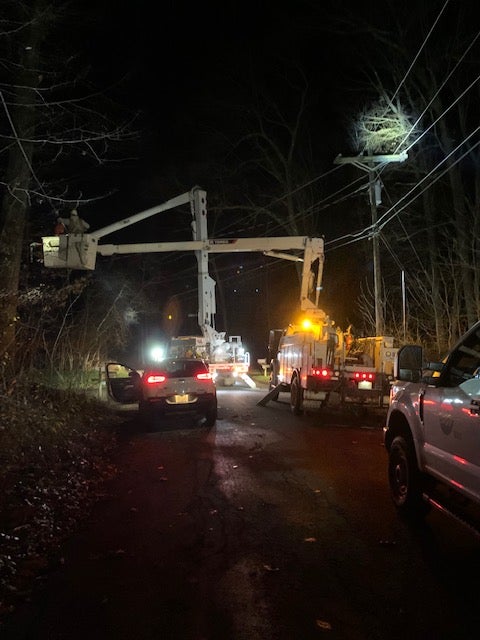 So while we all are constantly bombarded these days with the issue of cost increases - you hear it on the news, read about it online or in the newspaper, and see it at the store - we are trying our best to be mindful of how we spend money to keep the electric system that we use to provide your power in good shape. Despite the current challenging times, we are happy to report to you, our members, that your Cooperative remains mindful of the path forward. Our mission is to deliver the highest quality of service at the lowest possible cost. Our challenge is to continue to balance those two parts.
So while we all are constantly bombarded these days with the issue of cost increases - you hear it on the news, read about it online or in the newspaper, and see it at the store - we are trying our best to be mindful of how we spend money to keep the electric system that we use to provide your power in good shape. Despite the current challenging times, we are happy to report to you, our members, that your Cooperative remains mindful of the path forward. Our mission is to deliver the highest quality of service at the lowest possible cost. Our challenge is to continue to balance those two parts.
Look for Part III of this series in November.
